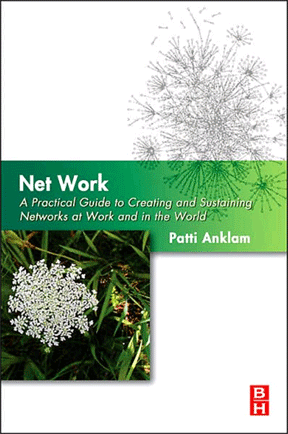I’ve been refreshing my NetWorkShop materials on value networks in preparation for some upcoming gigs. In these workshops, the focus is on literacy about the nature of networks as we have come to understand them in the first decade of the 21st century and on providing both insights and practical skills in “net work.”
Value networks, and an introduction to value network analysis, are a key part of understanding networks. The term is in wide use today, but for many of us its origins and deepest meaning come from Verna Allee and her 2003 book, The Future of Knowledge. Her definition:
A web of relationships that generates economic or social value through complex dynamic exchanges of both tangible and intangible benefits.
Verna’s insights led her to develop a mapping methodology, Value Network Analysis (VNA), which centers on a few basic differentiations:
- Separating people, titles, and job descriptions from roles. In a social network map, a node is a person. In a value network map, a node is a role, the actor responsible for a specific activity or set of activities.
- Focusing on the content of exchanges between roles. In a social network map, a link represents an aspect of a relationship; in a value network map, the link is the exchange of a named, identifiable deliverable.
- Distinguishing tangible and intangible deliverables. The flow of tangible deliverables in a business ecosystem result in the exchange of hard currencies, especially revenue, among members of the ecosystem. The flow of intangible deliverables represents the benefits of the relationships that keep things running smoothly and that overall contribute to a viable, and effective system.
For those unfamiliar, here’s an example that I use in my workshops.
Solid lines indicate tangibles. A professional services arm of a telecommunications manufacturer works through the sales and operations groups to deliver solutions to the customer. Intangibles, in dotted lines, show that the services folks have good relationships at a high level with the customer. But, where does the feedback from the actual delivery of the services go? Time to create this value network map with the services executives: 2.5 hours. Value? Immeasurable.
Verna has taught hundreds, if not thousands, of practitioners to use value network analysis, and until recently managed the methodology within the practitioner network. But now, the full methodology and detailed case studies and examples have just been published, under creative commons license, in an online book Value Networks and the true nature of collaboration. It’s a treasure trove and has been an amazing resource for me to refresh my NetWorkShop materials. Kudos (and huge thanks) to Verna, her business partner (and tool maestro) Oliver Schwabe, and webmaster sister Fran.
I’ve used VNA with a number of clients, sometimes as the deliverable for my services, sometimes as a sense-making activity that enables me to understand the client’s environment, stakeholders, and knowledge flow. (It’s terrific for establishing the ground for a knowledge management strategy.)
So I perk up when I hear the term, value network, and so perked up this morning when a post by Tim Kastelle about the relationship between business model innovation and thinking about value networks. The Danish company, Better Place, tackled one of the problems of electric cars — the short range afforded by a battery charge — to create a business model that mimics telecommunications companies. People purchase service contracts from Better Place based on their anticipated mileage, just as people pay their mobile service providers for the minutes they use on their mobile phones.
They had to think about the how to build an ecosystem, a value network, to support how people drive. So that people could drive longer distances, they needed to ensure that people could either recharge or swap batteries. To make the driving experience painless, they built an in-car dashboard to monitor energy usage and directions to switching stations. As they work on building a network of charging and swapping stations, they work with car manufacturers, battery providers, and utility partners to ensure a steady supply of energy to keep those cars on the road. Who’s got the map?




Thank you Patti for all the mentions. Tim Kastelle is a great resource on twitter and blogs for these topics as well. Best wishes in your workshops! Verna
Pingback: Patti Anklam » Co-Creation — because the knowledge is in the network